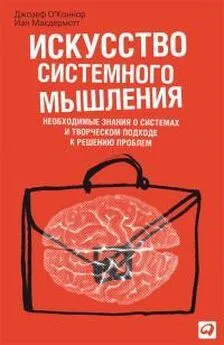Джозеф Халлинан - Почему мы ошибаемся. Ловушки мышления в действии
- Название:Почему мы ошибаемся. Ловушки мышления в действии
- Автор:
- Жанр:
- Издательство:Манн Иванов Фербер
- Год:2014
- Город:Москва
- ISBN:978-5-00057-211-5
- Рейтинг:
- Избранное:Добавить в избранное
-
Отзывы:
-
Ваша оценка:
Джозеф Халлинан - Почему мы ошибаемся. Ловушки мышления в действии краткое содержание
На русском языке публикуется впервые.
Почему мы ошибаемся. Ловушки мышления в действии - читать онлайн бесплатно ознакомительный отрывок
Интервал:
Закладка:
Burson K. A., 2007, Consumer-Product Skill Matching: The Effects of Difficulty on Relative Self-Assessment and Choice, Journal of Consumer Research 34, pp. 104–110.
Byrne C., 2000, Confused Vigilantes Attack Doctor’s Home, Chicago Sun-Times, Aug. 31, p. 34.
Byrne J., 2007, author interview.
Cain D. M., George Loewenstein, and Don A. Moore, 2005, The Dirt on Coming Clean: Perverse Effects of Disclosing Conflicts of Interest, Journal of Legal Studies 34, pp. 1–25.
Camerer C., 1998, Behavioral Economics and Nonrational Decision Making in Organizations, In Decision Making in Organizations, edited by J. Halpern and B. Sutton, Ithaca, N.Y.: Cornell University Press.
Camerer C., Linda Babcock, George Loewenstein, and Richard Thaler, 1997, Labor Supply of New York City Cabdrivers: One Day at a Time, Quarterly Journal of Economics 112, pp. 407–441.
Camerer C., and Robin Hogarth, 1999, The Effects of Financial Incentives in Experiments: A Review and Capital-Labor-Production Framework, Journal of Risk and Uncertainty 19, pp. 7–42.
Camerer C., and Eric J. Johnson, 1991, The Process-Performance Paradox in Expert Judgment: How Can Experts Know So Much and Predict So Badly? In Toward a General Theory of Expertise: Prospects and Limits, edited by K. Anders Ericsson and Jacqui Smith, Cambridge, U.K.: Cambridge University Press.
Camerer C., George Loewenstein, and Martin Weber, 1989, The Curse of Knowledge in Economic Settings: An Experimental Analysis, Journal of Political Economy 97 (5), pp. 1232–1254.
Camerer C., and Dan Lovallo, 1999, Overconfidence and Excess Entry: An Experimental Approach, American Economic Review 89 (1), pp. 306–18.
Campanelli J., 2006, I Forget My Password! With More and More Codes to Clutter Our Brains, It’s a Wonder We Don’t All Crash, Plain Dealer, Sept. 3, p. L1.
Caplan J., 2007, Cause of Death: Sloppy Doctors, Time, Jan. 15.
Carbaugh D. C., 2008, personal correspondence.
Cash J., 2005, Specialist’s Factual Report of Investigation, National Transportation Safety Board, Accident No. IAD05FA023, Oct. 18.
Chapman G., and Brian H. Bornstein, 1996, The More You Ask for, the More You Get: Anchoring in Personal Injury Verdicts, Applied Cognitive Psychology 10, pp. 519–540.
Chapman L. J., and Jean P. Chapman, 1967. Genesis of Popular but Erroneous Psychodiagnostic Observations, Journal of Abnormal Psychology 72 (3), pp. 193–204.
Charness N., 1991, Expertise in Chess: The Balance Between Knowledge and Search, In Toward a General Theory of Expertise: Prospects and Limits, edited by K. Anders Ericsson and Jacqui Smith, Cambridge, U.K.: Cambridge University Press.
Chase W. G., and K. Anders Ericsson, 1981, Skilled Memory, In Cognitive Skills and Their Acquisition, edited by John R. Anderson. Hillsdale N.J.: Lawrence Erlbaum Associates.
Chase W. G., and Herbert A. Simon, 1973, Perception in Chess, Cognitive Psychology 4, pp. 55–81.
Choi J., Erin McKillop, Michael Ward, and Natasha L’Hirondelle. 2006, Sex-Specific Relationships Between Route-Learning Strategies and Abilities in a Large-Scale Environment, Environment and Behavior 38 (6), pp. 791–801.
Christensen-Szalanski J. J. J., 1984, Discount Functions and the Measurement of Patient Values: Women’s Decisions During Childbirth, Medical Decision-Making 4, pp. 41–48.
Christensen-Szalanski J. J., and James B. Bushyhead, 1981, Physicians’ Use of Probabilistic Information in a Real Clinical Setting, Journal of Experimental Psychology: Human Perception and Performance 7 (4), pp. 928–935.
Christiansen R. E., et al., 1983, Influencing Eyewitness Descriptions, Law and Human Behavior 7, pp. 59–65.
Clarke N., 2006, Wynn Accidentally Damages Picasso, Las Vegas Review-Journal, Oct. 17, p. 3A.
Clothier M., 2006, Retailers Find Profit Windfall – Unused Gift Cards, Bloomberg News, Feb. 27.
CNN Interactive, 1997, Lack of Sleep America’s Top Health Problem, Doctors Say, March 17.
Cobb J. G., 2002, Menus Behaving Badly, New York Times, May 12.
Cohen G., 1990, Why Is It Difficult to Put Names to Faces? British Journal of Psychology 81, pp. 287–297.
Cohen G., and Dorothy Faulkner, 1986, Memory for Proper Names: Age Differences in Retrieval, British Journal of Developmental Psychology 4, pp. 187–197.
Conlin M., Ted O’Donoghue, and Timothy Vogelsang, 2006.
Projection Bias in Catalog Orders, American Economic Review 97 (4), pp. 1217–1249.
Corcoran D. W. J., 1967, Acoustic Factor in Proof Reading, Nature 214, pp. 851–52.
Corkery M., 2007, Home Myths Meet Reality, Wall Street Journal, Aug. 4–5, p. B1.
Cornell E. H., 2007, author interview.
Cornell E. H., and Deborah H. Hay, 1984, Children’s Acquisition of a Route via Different Media, Environment and Behavior 16 (5), pp. 627–41.
Cornell E. H., C. Donald Heth, and Lorri S. Broda, 1989, Children’s Wayfinding: Response to Instructions to Use Environmental Landmarks, Developmental Psychology 25 (5), pp. 755–64.
Cornell E. H., C. Donald Heth, and Wanda L. Rowat, 1992, Wayfinding by Children and Adults: Responses to Instructions to Use Look-Back and Retrace Strategies, Developmental Psychology 28 (2), pp. 328–336.
Cornell E. H., Autumn Sorenson, and Teresa Mio, 2003, Human Sense of Direction and Wayfinding, Annals of the Association of American Geographers 93 (2), pp. 399–425.
Cross J. F., Jane Cross, and James Daly, 1971, Sex, Race, Age, and Beauty as Factors in Recognition of Faces, Perception & Psychophysics 10 (6), pp. 393–396.
Dabbs J. M., Jr., et al., 1998, Spatial Ability, Navigation Strategy, and Geographic Knowledge Among Men and Women, Evolution and Human Behavior 19, pp. 89–98.
Dana J., and George Loewenstein, 2003, A Social Science Perspective on Gifts to Physicians from Industry, Journal of the American Medical Association 290 (2), pp. 252–255.
Davis H. L., Stephen J. Hoch, and E. K. Easton Ragsdale, 1986, An Anchoring and Adjustment Model of Spousal Predictions, Journal of Consumer Research 13, pp. 25–37.
Davis R., 2006, «Wrong Site» Surgeries on the Rise, USA Today, April 18, p. D5.
Dawes R., David Faust, and Paul E. Meehl, 1989, Clinical Versus Actuarial Judgment, Science 243, pp. 1668–1674.
Dean C., 2005, Scientific Savvy? In U.S., Not Much, New York Times, Aug. 30.
Dean J., 2007, author correspondence.
Decina L., 2007, author interview.
DellaVigna S., 2007, Psychology and Economics: Evidence from the Field, Working paper.
DellaVigna S., 2008, author interview.
DellaVigna S., and Ulrike Malmendier, 2004, Contract Design and Self-Control: Theory and Evidence, Quarterly Journal of Economics 119 (2), pp. 353–402.
DellaVigna S., and Ulrike Malmendier, 2005. Paying Not to Go to the Gym. American Economic Review 96 (3), pp. 694–719.
DellaVigna S., and Joshua M. Pollet, 2008. Investor Inattention and Friday Earnings Announcements, Journal of Finance, forthcoming.
Deloitte, 2007, Yes, Virginia, There Is a Santa Claus, Press release, Nov. 1.
DelVecchio D., H. Shanker Krishnan, and Daniel C. Smith, 2007, Cents or Percent: The Effects of Promotion Framing on Price Expectations and Choice, Journal of Marketing 71 (3).
DePaulo B. M., et al., 1996, Lying in Everyday Life, Journal of Personality and Social Psychology 70, pp. 979–995.
Diaz J., 1989, Perils of Putting, Sports Illustrated, April 3, pp. 76–79.
Diener E., and Carol Diener, 1996, Most People Are Happy, Psychological Science 7 (3), pp. 181–185.
Dingus T. A., et al., 2006, The 100-Car Naturalistic Driving Study, Phase II – Results of the 100-Car Field Experiment, National Highway Traffic Safety Administration, Report No. DOT HS 810 593, Washington, D.C.
DiVita J., et al., 2004, Verification of the Change Blindness Phenomenon While Managing Critical Events on a Combat Information Display, Human Factors 46 (20), pp. 205–218.
Doege D., 2007, Man Mistakes Porn DVD as Woman’s Cries for Help; He Faces Charges After Entering Apartment with Sword in Tow, Milwaukee Journal Sentinel, Feb. 20.
Doege D., and Amy Rinard, 2007, Swordsman’s Claim Disputed; Prosecutor Says Sounds on Neighbor’s DVD Were Consensual Sex, Not Rape, Milwaukee Journal Sentinel, Feb. 21.
Donley R., and M. Ashcraft, 1992, The Methodology of Testing Naïve Belief in the Physics Classroom, Memory & Cognition 20 (4), pp. 381–91.
Dooren J. C., 2008, FDA Warns 2 Disodium Drugs Can Be Mistaken for Each Other, Wall Street Journal, Jan. 17, p. D4.
Douglas K., et al., 2005, Attention Seeking, New Scientist, May 28, p. 38.
Dremen D. N., and Michael A. Berry, 1995, Analyst Forecasting Errors and Their Implications for Security Analysts, Financial Analysts Journal, May/June, pp. 30–41.
Dudokovich N., Elizabeth Marsh, and Barbara Tversky, 2004, Telling a Story or Telling It Straight: The Effects of Entertaining Versus Accurate Retellings on Memory, Applied Cognitive Psychology 18, pp. 125–143.
Dugas C., 2007, Too Many 401(k)s Still Have Too Much Company Stock, USA Today, Dec. 14, 2007.
Duncker K., 1939, The Influence of Past Experience upon Perceptual Properties, American Journal of Psychology 52, pp. 255–265.
Dunleavey M. P., 2007, Disclosing Bias Doesn’t Cancel Its Effects, New York Times, July 28, p. B6.
Dux P. E., Jason Ivanoff, Christopher L. Asplund, and Rene Marois, 2006, Isolation of a Central Bottleneck of Information Processing with Time-Resolved fMRI, Neuron 52, pp. 1109–1120.
Dweck C., S., 1999, Self-Theories: Their Role in Motivation, Personality, and Development, Philadelphia: Psychology Press.
Ebbinghaus H., 1964, Memory: A Contribution to Experimental Psychology, New York: Dover. (Originally published 1885; translated 1913.)
Einstein Gilles, et al., 2003, Forgetting of Intentions in Demanding Situations Is Rapid, Journal of Experimental Psychology: Applied 9, pp. 147–62.
Einstein N., 2007, author interview.
Epley N., and Erin Whitchurch, 2008, Mirror, Mirror on the Wall: Enhancement in Self-Recognition, Personality and Social Psychology Bulletin 34 (9), pp. 1159–1170.
Ericsson K. A., 1996, The Road to Excellence: The Acquisition of Expert Performance in the Arts and Sciences, Sports and Games, Mahwah, N.J.: Lawrence Erlbaum Associates.
Ericsson K. A., 2007, author interview.
Ericsson K. A., Roy W. Roring, and Nandagopal Kiruthiga, 2007, Giftedness and Evidence for Reproducibly Superior Performance: An Account Based on the Expert Performance Framework, High Ability Studies 18 (1), pp. 3–56.
Ericsson K. A., and Jacqui Smith, eds. 1991, Toward a General Theory of Expertise: Prospects and Limits, Cambridge, U.K.: Cambridge University Press.
Esch H. E., and J. E. Burns, 1996, Distance Estimation by Foraging Honeybees. Journal of Experimental Biology 199 (1), pp. 155–162.
Etienne A. S., et al., 1999, Dead Reckoning (Path Integration), Landmarks, and Representation of Space in a Comparative Perspective. In Wayfinding Behavior: Cognitive Mapping and Other Spatial Processes, edited by Reginald G. Golledge. Baltimore: Johns Hopkins University Press.
Fackelmann K., 2006. Study: Long Hospital Shifts, Sleep Deprivation Can Kill, USA Today, Dec. 12, p. 1.
Feldman R. S., J. A. Forrest, and B. R. Happ, 2002, Self-Presentation and Verbal Deception: Do Self-Presenters Lie More? Basic and Applied Social Psychology 24, pp. 163–170.
Ferraro R., et al., 2005, Let Us Eat and Drink, for Tomorrow We Shall Die: Effects of Mortality Salience and Self-Esteem on Self-Regulation in Consumer Choice, Journal of Consumer Research 32, pp. 65–75.
Fielding R., 2003, Password Problems Swamp Help Desks, Vnunet.com, Jan. 15.
Читать дальшеИнтервал:
Закладка:

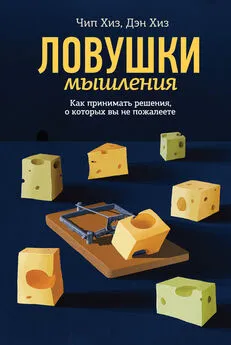
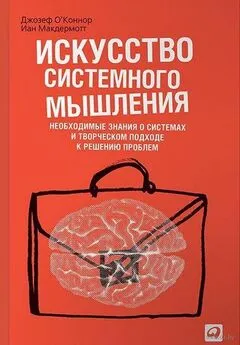

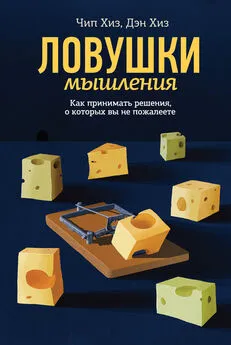
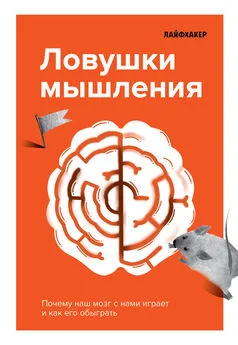
![Джозеф Халлинан - Почему мы ошибаемся? [Ловушки мышления в действии] [litres]](/books/1067113/dzhozef-hallinan-pochemu-my-oshibaemsya-lovushki-myshl.webp)
